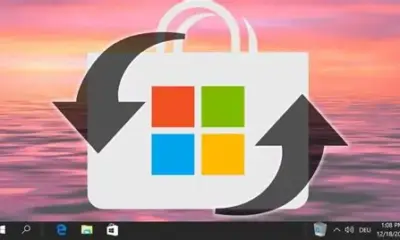Tech
Epic Games Says Apple’s New Install Process Slashes User Drop-offs by 60%
Epic Games reports a 60% reduction in user drop-offs with Apple’s new, streamlined app installation method in the EU, improving the user experience.
Epic Games, the company behind the popular game Fortnite, announced a 60 percent reduction in the number of users who abandon the installation process for their apps on iPhones in the European Union. This improvement comes after Apple introduced a more direct and simpler installation system, a change mandated by the EU’s Digital Markets Act (DMA). The new method removes several warning screens and complex steps that previously discouraged users from completing downloads from sources outside Apple’s own App Store.
Key Takeaways
- Fewer Failed Installs: Epic Games observed a 60% decrease in users quitting during the app installation process.
- Simplified Process: Apple’s new “direct-to-device” installation flow in the EU is the reason for this change. It is much simpler than the previous method.
- DMA Mandate: The change was not voluntary. Apple was forced to alter its system to comply with the European Union’s Digital Markets Act.
- Old System Was a Barrier: The previous installation process involved multiple confusing warnings that made users think they were doing something unsafe, causing many to cancel the download.
The core of this development lies in the difference between the old and new ways of installing apps from third-party marketplaces on an iPhone. Before the change, a user in the EU trying to install an app from a place like the Epic Games Store was met with a difficult procedure. The system would show several pop-up warnings and required users to navigate deep into their iPhone’s settings to approve the installation. Many users found this process confusing and alarming, leading them to abandon the installation midway.
Apple has now implemented a more integrated “direct-to-device” installation system. This new flow feels much closer to the experience of downloading an app from the official App Store. It has fewer steps and eliminates the scary warnings that were a major point of friction. Epic Games’ data shows that by making the process smoother, users are far more likely to complete the installation.
This entire situation is a direct result of the Digital Markets Act (DMA), a major piece of legislation from the European Union. The DMA is designed to create a fairer digital market by setting rules for large technology companies, which it calls “gatekeepers.” Apple is one of these gatekeepers. The law required Apple to open up its iOS platform to allow for third-party app stores and alternative payment systems within the 27 EU member countries.
The long-standing conflict between Epic Games and Apple over App Store policies adds important context. Epic has been a vocal critic of Apple’s control over its ecosystem, arguing that the 30% commission and restrictive rules are anti-competitive. The data showing a 60% drop-off reduction provides Epic with concrete evidence to support its argument that Apple’s previous system was designed to hinder competition. While these changes are currently limited to the EU, they set a precedent that could influence regulations in other parts of the world.
Frequently Asked Questions (FAQs)
Q. Why did Apple change the installation process in the EU?
A. Apple changed the process to comply with the European Union’s Digital Markets Act (DMA), which requires large tech platforms to allow for more competition, including third-party app stores.
Q. What is the Digital Markets Act (DMA)?
A. The DMA is a law in the European Union that aims to make the digital economy fairer. It sets rules for large online platforms, known as “gatekeepers,” to prevent them from using their dominant position to harm competitors.
Q. Is this new installation method available worldwide?
A. No, this new, simpler installation process is currently only available for iPhone users within the European Union.
Q. What is a “user drop-off” in this context?
A. A “user drop-off” refers to a situation where a user starts a process, like installing an app, but quits before finishing it. In this case, users were abandoning the installation because of the complicated steps and warnings.

















